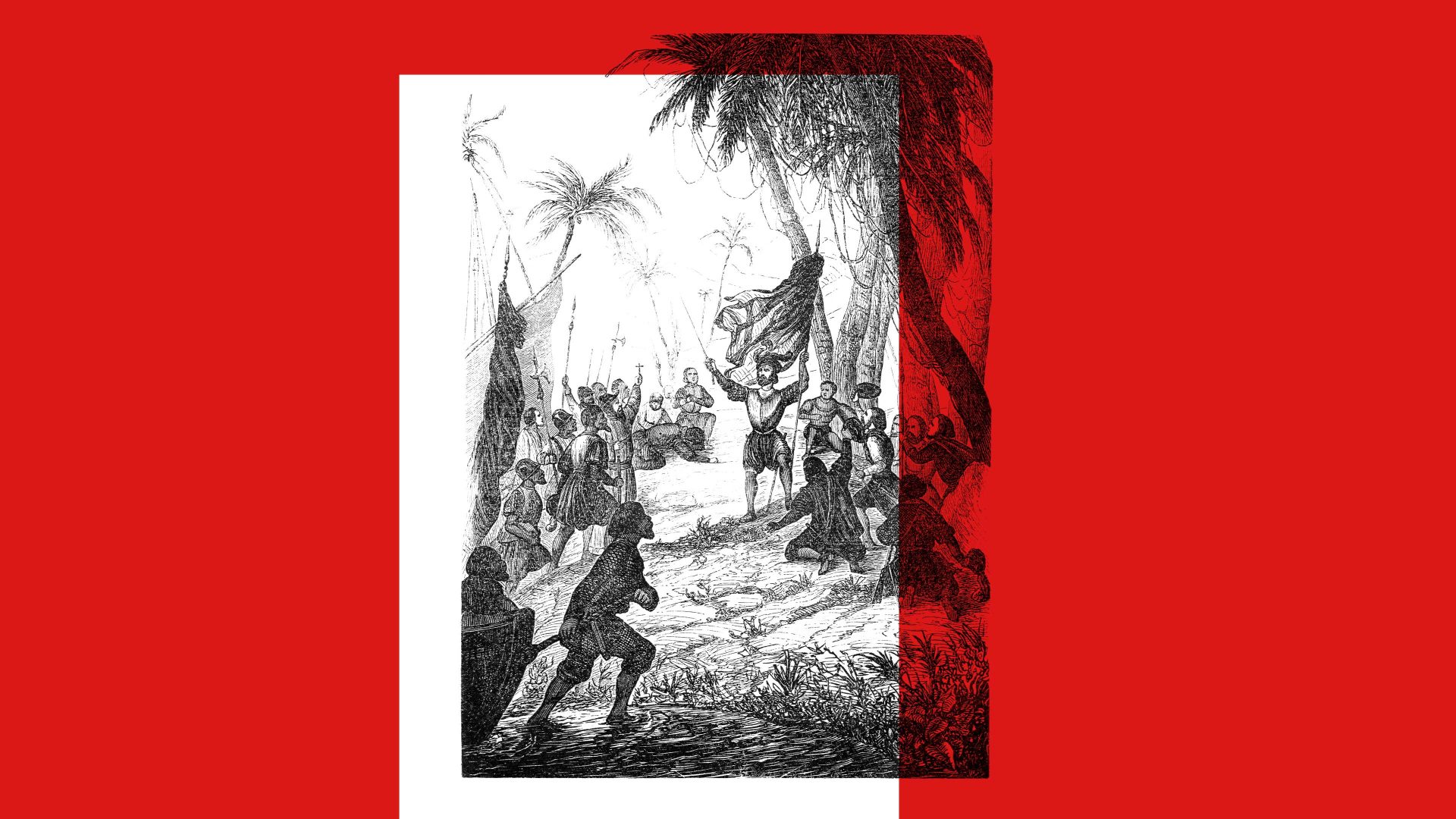There are many caveats that can be raised around the notion that America was discovered by Christopher Columbus in 1492. To start with, his name was not really Christopher Columbus but Cristoffa Corombo – this was its form in his native language, Genoese (the Italian version was Cristoforo Colombo). Genoa was one of the great Mediterranean maritime powers, and its language was widely spoken in Mediterranean ports.
We also all know that Columbus did not really “discover” America. The native Americans had already been there for many thousands of years; and many other peoples, including the Scandinavian Vikings, had landed on its shores in the meantime. And in any case, Columbus knew perfectly well where he was going, having sailed to Greece and west Africa as well as to England and Ireland, and perhaps Iceland, as a young sailor. There is also good evidence that he spent time in harbour towns such as Bristol and Galway, where he would have come into contact with sailors and fishermen who were familiar with the North Atlantic Ocean, including in particular the fishing grounds off Newfoundland.
On Columbus’s Spanish-financed initial voyage in 1492, the first landfall was made on the islands of the Bahamas. But this should be no cause for celebration today because what happened next was dreadful.
When the English reached the Bahamas nearly 130 years after Columbus, what they found was shocking: there was hardly anybody there. The Spanish had carried off so many of the indigenous Bahamians into slavery – some estimates are as high as 40,000 – that by 1520, only 30 years after Columbus’s first expedition had arrived, there were only a handful of indigenous people left; most of the islands of the Bahamas then remained uninhabited for many decades.
The unfortunate native Bahamians were the people we know as the Taino. Their language, also called Taino, was a member of the large Arawakan language family. Today, Arawakan languages are spoken in parts of Brazil, Peru, Colombia, Venezuela, Guyana, Guyane (or French Guiana) and Suriname.
Jamaica was another island inhabited by the Taino, and they too were exterminated by the Spanish; the same sad scenario occurred, too, in the Turks and Caicos islands.
The Taino language was also spoken in what are now the Cayman Islands, Haiti, the Dominican Republic and Cuba. Reports indicate that the language had become entirely extinct a little more than 100 years after the first arrival of Columbus. But others suggest that it did survive on some islands in isolated pockets until the late 1800s.
Nevertheless, we are not completely ignorant of what this language was like. And we know that quite a lot of European-language words are definitely or probably derived from Taino – it was, after all, the first language of the Caribbean to come into contact in a major way with European languages.
For example, the word maize, from their word mahiz; and hurricane comes from Taino hurakán. Other words which are probably of Taino origin include barbecue, canoe, hammock, mangrove and manatee.
Maybe the next time we have a barbecue, those of us who are of European origin might want to spare a thought for the people who gave us this word and who we then repaid by exterminating them.
GENOESE
The homeland of Columbus’s native language, Genoese, lies in Liguria, the
Mediterranean coastal area of Italy between Monaco and La Spezia. It is
closely related linguistically to Italian and French. Genoese had a substantial
input into the vernacular language of Gibraltar, Llanito (TNE #40). The Genoese language is now endangered, with most speakers today being elderly.




